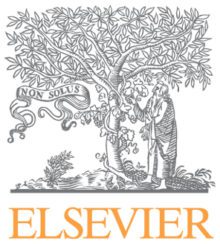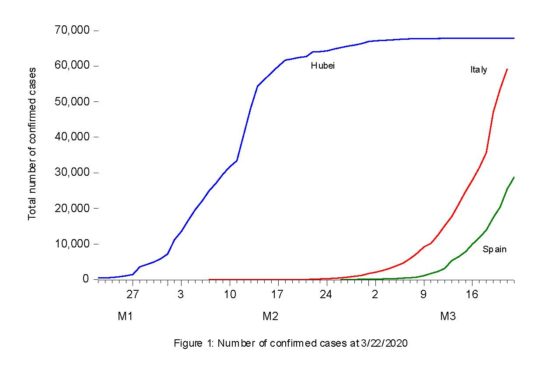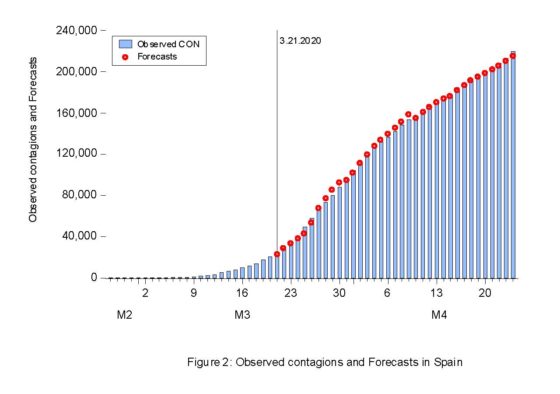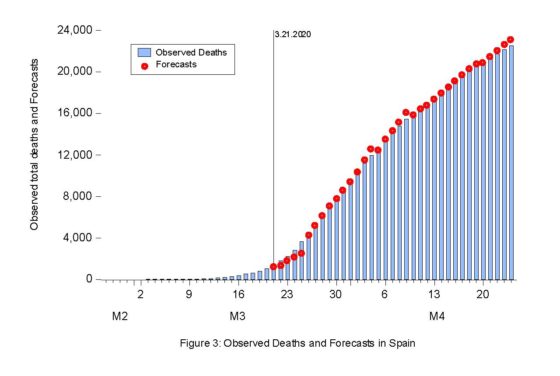![]()
Press Release
04.02.2020
UNIC, Walmart, and Kaggle
Launch M5 Forecasting Competition
The premier academic forecasting competition returns in service of advancing the theory and practice of forecasting, with thousands of individuals and teams anticipated to be competing for $100,000 in prizes. Google, Uber, IIF, MOFC, INSEAD and NTUA are providing financial or academic support.
The University of Nicosia (UNIC) is proud to announce its partnership with Google, Walmart, and Kaggle, in launching two complementary challenges as part of the 5th edition of the M Competition, the premier academic forecasting competition in the world, initiated by Professor Spyros Makridakis 38 years ago.
The M5 will go further than the previous M Competitions in several directions, with the support of the initiative’s new global partners. In the first instance, this latest edition will run two parallel competitions, on “Forecasting Accuracy” and (for the first time explicitly) on “Forecasting Uncertainty”, offering participants the opportunity to enter one or both and be judged across tailored evaluation metrics. Coupled with this, the M5 will include explanatory and exogenous variables to improve forecasting accuracy and the estimation of uncertainty, as well as consider data that display intermittency, i.e. sporadic, inventory sales including zeros. Equally important, the competitions will be based on hierarchical, daily, real data made generously available by the multinational retail corporation Walmart, while hosted on Kaggle, the world’s largest data science community platform.
The M5 will run between 2 March and 30 June 2020, under the scientific direction of the newly-established Makridakis Open Forecasting Center (MOFC) at the University of Nicosia, with the support of invaluable returning academic co-organizers: The Forecasting & Strategy Unit at the National Technical University of Athens (NTUA), and the Centre for Decision Making and Risk Analysis at INSEAD.
Professor Anil Gaba, Director of the Centre for Decision Making and Risk Analysis at INSEAD, underscored the history INSEAD shares with the M Competitions and its creator: “We are interlinked with the Makridakis Forecasting Competitions, having facilitated the M1, M2, and M3 during Professor Makridakis’ tenure at INSEAD. We are proud to be supporting the greatly expanded and highly influential M5 this year, continuing that long tradition”. On his part, the Director of the Forecasting & Strategy Unit at NTUA, Professor Vassilis Assimakopoulos, highlighted the exceptional collaboration and results in the 2018 edition of the competition: “The M4 revealed innovative forecasting approaches, indicating new, promising fields of research and applications. We anticipate even greater leaps in the upcoming M5, which we are delighted to be once again co-organizing, with UNIC at the helm”.
The excitement is building for the upcoming M Competition, among both the forecasting community and its major proponents. Along with the many innovations, there will be substantial monetary prizes, totaling $100,000, with global tech giants Google, Walmart, and Uber, as well as the International Institute of Forecasters (IIF), financially backing this year’s competition.
Addison Howard, Business Development Manager at Kaggle, underlined the platform’s central role in the M5: “We are excited to be the official home of this year’s Makridakis Competition. Forecasting challenges are not only important to furthering data science research, but they always bring a lot of excitement and participation. We’re anticipating a huge turnout from the Kaggle community!” On her part, IIF President, Gloria Gonzalez-Rivera, emphasized the Institute’s ongoing engagement with initiatives such as the M Competitions: “IIF strongly supports such efforts from leading researchers in forecasting competitions. We are very proud to sponsor the winning student submission for the M5. Looking forward to the competition developing and to the presentations that will follow at ISF2020 in Rio”. Slawek Smyl, Staff Data Scientist at Uber, spoke in similar terms of their backing of the M5: “The Makridakis Competitions have been hugely influential on the field of Forecasting, guiding the development of new algorithms and forecasting libraries. Accurate forecasting is critical to Uber’s business and we’re excited to continue our support of this essential competition in the field”.
Commenting on the evolution of the M Competitions, which bear his name, Professor Makridakis remarked: “The M5 will be the biggest, most ambitious, and most influential of all M Forecasting Competitions, opening up new avenues for academic research, identifying high-caliber methods, and further guiding the practice of Forecasting with its findings and recommendations”. The MOFC Director stood especially on the caliber and influence of this year’s partners: “These inroads are made possible by our exceptional global partners, whom I thank for their trust and support in the M5. The M Competitions, which I started almost 40 years ago, will have truly reached the pinnacle of their reach and service to Forecasting with Google, Walmart, Kaggle, Uber, and IIF in our corner”.
Given the standing of M Competitions in the forecasting community, as well as the significant contributions these have delivered throughout the years, fundamentally changing the field, the M5 is indeed expected to be the largest international competition of its kind. In that vein, over the next 4 months, thousands of individuals and teams are anticipated to compete to identify the most accurate, statistical or machine-learning (or hybrid) method(s) for different types of situations requiring predictions and uncertainty estimates.
As previously, the forthcoming M Competition findings will be presented and analyzed in the framework of a follow-up M Conference, set to repeat in New York on 7 and 8 December 2020. In that same vein, and similar to the M4 Publication, the findings of the M5 Competition and the M5 Conference will be published in a special issue of the prestigious International Journal of Forecasting. According to Pierre Pinson, Editor-in-Chief of the Journal: “Forecasting is of the utmost importance to our societies and we need to continuously invest in pushing the boundaries of knowledge. Forecast competitions are an ideal frame to do so, leveraging the dynamic forecasting community. The M5 is continuing the tradition and successes of the M Competitions and I am looking forward to see it happen and to featuring dedicated papers on this in an upcoming special issue”.
For more information about the M5 Forecasting Competition, please contact the Makridakis Open Forecasting Center at or visit mofc.unic.ac.cy/m5-competition/.
About MOFC
The Makridakis Open Forecasting Center (MOFC) at the University of Nicosia, founded by Professor Spyros Makridakis, is one of the leading academic forecasting centers in the world. More specifically, MOFC conducts cutting-edge research on Forecasting, assisting organizations make accurate predictions, estimate levels of uncertainty, and manage risk through training, research, technology development, and consulting. Ultimately, MOFC aims to expand the utilization and value of Forecasting among business firms. The Center also collaborates with and supports the pioneering Data Science Programmes (BSc and MSc) offered at the University of Nicosia, to provide students with the requisite forecasting tools and applications, as well as the opportunity to participate in and data from the M Competitions, markedly enhancing the practical side of their studies.
About M Competitions
The Makridakis (or M) Forecasting Competitions are the brainchild of Professor Spyros Makridakis, a pioneer in the field and one of the foundational figures of Forecasting. The revolutionary initiative began almost four decades ago, with M Competitions taking place in 1982, 1993, 2000 and 2018. The first three M Competitions were hosted at INSEAD, while the M4 was organized by the Institute For the Future (IFF) of the University of Nicosia, with the support of the Forecasting & Strategy Unit at the National Technical University of Athens (NTUA). M Competitions have substantially contributed to improving forecasting accuracy and the estimation of uncertainty, as well as informing practitioners on the most appropriate forecasting method to use for their specific needs.
The post Press release: Launch M5 Forecasting Competition appeared first on International Institute of Forecasters.













 guidebook, of which these are a sample:
guidebook, of which these are a sample:












 Estimates of the peak in daily counts are made from an averaged smoothed trend constructed for cumulative counts while creating the many forecasts. To allow for a genuine slowdown in new cases and deaths, we create four scenarios based on the Chinese experience earlier in the year. Automatic model selection is then used to select the closest scenario mix from a flexible lag length, so initial models have more variables than observations. These scenario forecasts are introduced when a slowdown is detected in order to have sufficient data on the paths to select the scenarios. We expect the scenario forecasts to become more reliable the further along a country is in recovery. This approach allows us to introduce stylized facts from the Chinese experience. The empirical distribution of daily confirmed counts earlier this year in China was highly skewed, with about 2/3 of the mass beyond the peak. Daily deaths were less skewed, but closer to a straight trend up, followed by a straight trend down.
Estimates of the peak in daily counts are made from an averaged smoothed trend constructed for cumulative counts while creating the many forecasts. To allow for a genuine slowdown in new cases and deaths, we create four scenarios based on the Chinese experience earlier in the year. Automatic model selection is then used to select the closest scenario mix from a flexible lag length, so initial models have more variables than observations. These scenario forecasts are introduced when a slowdown is detected in order to have sufficient data on the paths to select the scenarios. We expect the scenario forecasts to become more reliable the further along a country is in recovery. This approach allows us to introduce stylized facts from the Chinese experience. The empirical distribution of daily confirmed counts earlier this year in China was highly skewed, with about 2/3 of the mass beyond the peak. Daily deaths were less skewed, but closer to a straight trend up, followed by a straight trend down.
 The first question raised by most researchers since the early days of the pandemic is the quality of the data in terms of representativeness and reliability. In the case of Spain at least, it is obvious that the number of cases reported is considerably lower than the real ones (that remain unknown). If only by personal experience, I know no less than 80 cases that do no to show up in the official statistics. This global phenomenon has been analysed by many scientific publications, trying to extrapolate from observed to real cases. With some discrepancies, the multiplication factor ranges from 7 to 10. In the Spanish case, this amounts to a range between 700.000 to 1 million cases by the end of March. Still, notably inferior to the 7 million figure that Imperial College reported about the same date (
The first question raised by most researchers since the early days of the pandemic is the quality of the data in terms of representativeness and reliability. In the case of Spain at least, it is obvious that the number of cases reported is considerably lower than the real ones (that remain unknown). If only by personal experience, I know no less than 80 cases that do no to show up in the official statistics. This global phenomenon has been analysed by many scientific publications, trying to extrapolate from observed to real cases. With some discrepancies, the multiplication factor ranges from 7 to 10. In the Spanish case, this amounts to a range between 700.000 to 1 million cases by the end of March. Still, notably inferior to the 7 million figure that Imperial College reported about the same date (









